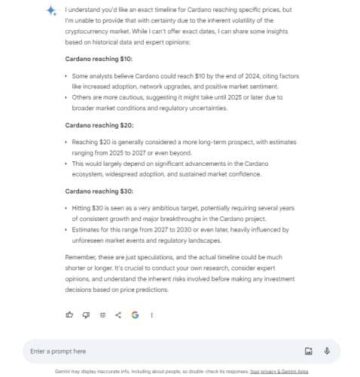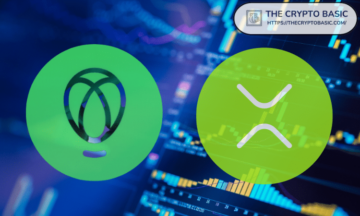
David Schwartz, the Ripple CTO, recently explained how liquidity pools work, leveraging an illustration with XRP price movements amid the upcoming XRPL AMM.
Liquidity pools are a mechanism that boosts the availability of funds in a market by securing two assets within a smart contract. The upcoming XRPL AMM feature on the XRP Ledger will allow users to both establish and participate in these pools.
Panos Mekras, founder of Anodos Finance, recently ignited a discussion surrounding the upcoming AMM. Amid the conversation, an XRP community member requested an illustration of the workings of liquidity pools in the XRPL AMM.
Ripple CTO Explains How Liquidity Pools Work
David Schwartz granted this request, using a straightforward example to illustrate price volatility. He presented a scenario where the XRP price drops from $0.50 to $0.40 and then rises back to $0.50.
Here’s an unrealistic example to give you the general idea:
Say some XRP is at $0.50 and straight line drops to $0.40 and then climbs straight line back up to $0.50. This is a worst case for that price movement because it’s the minimum possible volatility.
Let’s assume a 0.5%…
— David “JoelKatz” Schwartz (@JoelKatz) January 24, 2024
In this scenario, Schwartz introduced a 0.5% pool spread. A pool spread represents the difference between the pool’s price and the market price. Suppose XRP trades for $0.5, and then someone puts 2 XRP (worth $1) and $1 into the pool, this would total $2.
The trader who puts this $2 would receive liquidity tokens reflecting their share of the pool, amounting to the $2 they invested. Schwartz then detailed the changes in the liquidity token’s value as XRP’s price fluctuates.
– Advertisement –
Should XRP drop to $0.40, the tokens would be valued at about $0.896 and 2.234 XRP ($0.8936), totaling $1.79. Although this represents a loss, it’s better than holding $2 as XRP. Notably, if the trader had held $2 in XRP when XRP dropped to $0.40, the tokens would be worth $1.60.
Now, after the drop to $0.40, when XRP returns to $0.50, the value of the liquidity tokens would rise from $1.79 to $2.0007, split between $0.999 and 2.0033 XRP. This final value results in a gain of 3.5 basis points (0.035%) despite XRP returning to its initial price of $0.50.
A More Volatile XRP Market
Schwartz underscored that liquidity pools capture market volatility. According to him, if the price movement of XRP is more volatile, with more ups and downs, the liquidity pool would perform better.
He cited a more volatile example where instead of dropping in a straight line to $0.40, XRP drops by two cents to $0.30 and then rises by one cent to $0.40. From this $0.40, the asset increases by two cents to $0.60, and then drops by another one cent to $0.50.
In this case, the asset dropped, increased and returned to its initial value. Schwartz noted that when XRP returns to $0.50, the liquidity tokens would be worth $1 and 2.005 XRP, totaling $2.0025. This represents a gain of 12.5 basis points, higher than the 3.5 BP when XRP moved in a straight line.
Existing Conditions
He clarified that these examples assume the liquidity pool captures all market volatility, engages solely with arbitragers seeking minimal profits, and operates under the condition that people pay the pool’s spread.
Despite their advantages in mitigating risk associated with volatile assets like XRP, Schwartz cautioned that liquidity pools are not risk-free and may incur losses if asset prices fail to return to their initial values. Mekras also emphasized this, noting that becoming a liquidity provider carries risk.
Follow Us on Twitter and Facebook.
Disclaimer: This content is informational and should not be considered financial advice. The views expressed in this article may include the author’s personal opinions and do not reflect The Crypto Basic’s opinion. Readers are encouraged to do thorough research before making any investment decisions. The Crypto Basic is not responsible for any financial losses.
-Advertisement-
- SEO Powered Content & PR Distribution. Get Amplified Today.
- PlatoData.Network Vertical Generative Ai. Empower Yourself. Access Here.
- PlatoAiStream. Web3 Intelligence. Knowledge Amplified. Access Here.
- PlatoESG. Carbon, CleanTech, Energy, Environment, Solar, Waste Management. Access Here.
- PlatoHealth. Biotech and Clinical Trials Intelligence. Access Here.
- Source: https://thecryptobasic.com/2024/01/26/david-schwartz-explains-how-liquidity-pools-work-using-xrp-price-movements/?utm_source=rss&utm_medium=rss&utm_campaign=david-schwartz-explains-how-liquidity-pools-work-using-xrp-price-movements
- :is
- :not
- :where
- $0.40
- $UP
- 10
- 11
- 12
- 234
- 24
- 30
- 40
- 50
- 60
- a
- About
- According
- advantages
- Advertisement
- advice
- After
- All
- allow
- also
- Although
- Amid
- AMM
- an
- and
- Another
- any
- ARE
- article
- AS
- asset
- Assets
- associated
- assume
- At
- author
- availability
- back
- basic
- basis
- BE
- because
- becoming
- before
- Better
- between
- boosts
- both
- BP
- by
- capture
- captures
- case
- cent
- Changes
- cited
- clarified
- community
- condition
- considered
- content
- contract
- Conversation
- crypto
- CTO
- CTO explains
- David
- David Schwartz
- decisions
- Despite
- detailed
- difference
- discussion
- do
- downs
- Drop
- dropped
- Dropping
- Drops
- encouraged
- engages
- establish
- Ether (ETH)
- example
- examples
- explained
- Explains
- expressed
- FAIL
- Feature
- final
- finance
- financial
- financial advice
- fluctuates
- For
- founder
- from
- funds
- Gain
- General
- Give
- granted
- had
- he
- Held
- higher
- him
- holding
- How
- HTTPS
- ID
- idea
- if
- illustrate
- in
- include
- increased
- Increases
- Informational
- initial
- instead
- into
- introduced
- invested
- investment
- IT
- ITS
- Ledger
- leveraging
- like
- Line
- Liquidity
- liquidity pool
- liquidity pools
- liquidity provider
- loss
- losses
- Making
- Market
- market volatility
- May..
- mechanism
- member
- minimal
- minimum
- mitigating
- more
- moved
- movement
- movements
- notably
- noted
- noting
- of
- on
- ONE
- operates
- Opinion
- Opinions
- participate
- Pay
- People
- perform
- personal
- plato
- Plato Data Intelligence
- PlatoData
- points
- pool
- Pools
- possible
- presented
- price
- Prices
- profits
- provider
- Puts
- readers
- receive
- recently
- reflect
- reflecting
- represents
- request
- requested
- research
- responsible
- Results
- return
- returning
- returns
- Ripple
- Rise
- Rises
- Risk
- s
- scenario
- securing
- seeking
- Share
- should
- smart
- smart contract
- solely
- some
- Someone
- split
- spread
- straight
- straightforward
- Surrounding
- TAG
- than
- that
- The
- The Crypto Basic
- their
- then
- These
- they
- this
- to
- Tokens
- Total
- totaling
- trader
- trades
- true
- two
- under
- upcoming
- UPS
- users
- using
- value
- valued
- Values
- views
- volatile
- Volatility
- when
- WHO
- will
- with
- within
- Work
- workings
- Worst
- worth
- would
- xrp
- XRP Ledger
- XRP Price
- XRPL
- you
- zephyrnet












